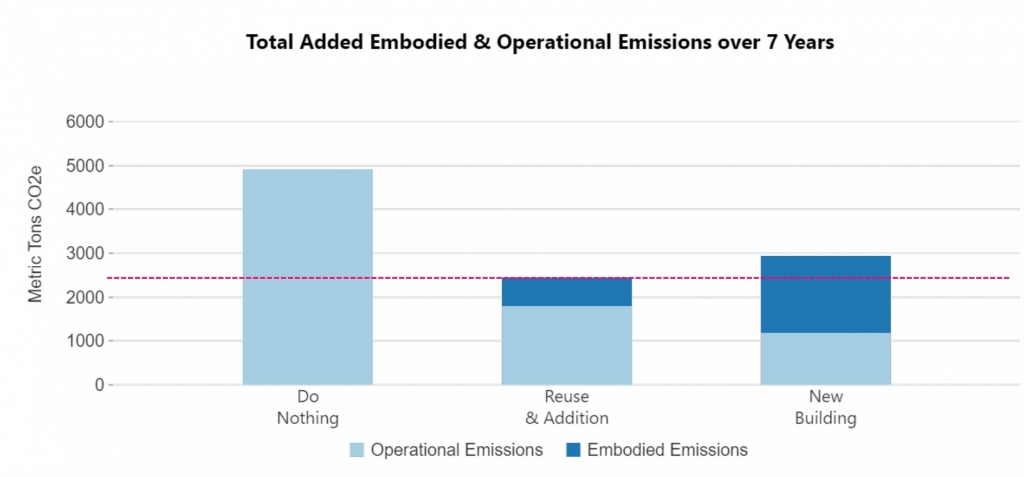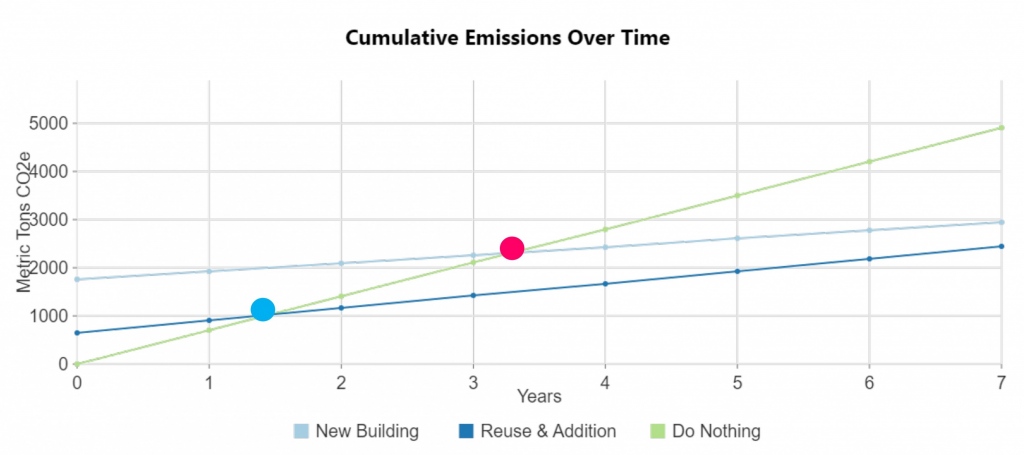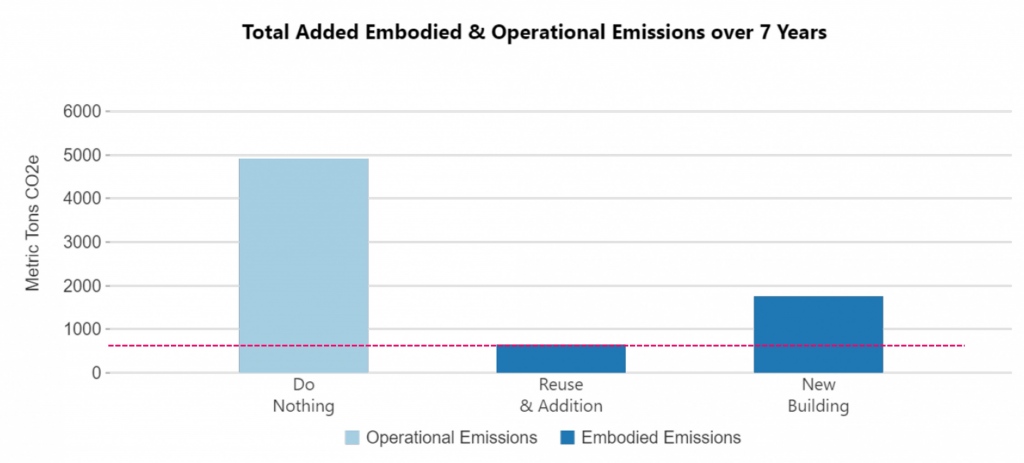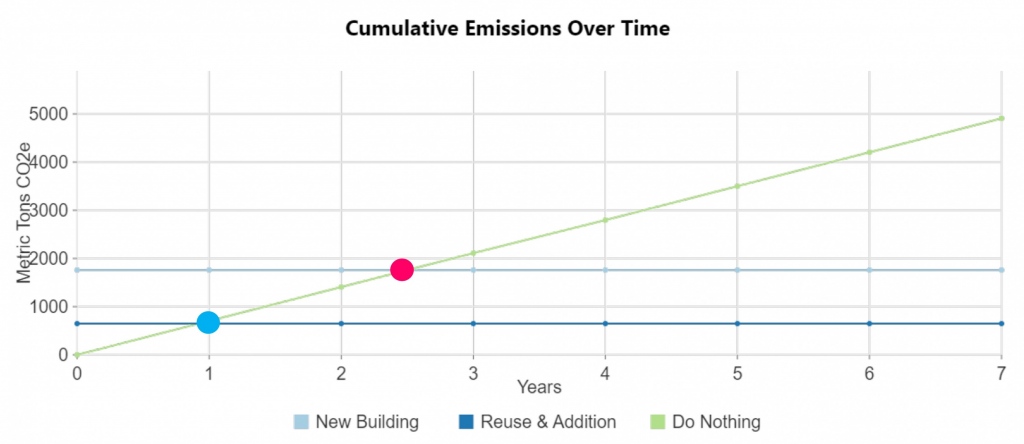We often have many questions associated with retrofitting versus new construction. Which option is better? What if a new structure has low operational emissions? What if we offset operational energy with renewable energy? We can answer many such questions by conducting a high-level carbon emissions assessment using the CARE Tool, which calculates the operational and embodied carbon emissions of reusing, upgrading or replacing an existing building.

We recently utilized CARE to evaluate the Horace Mann Building at Salem State University using the following inputs:
- Seven-year timeframe to understand the emissions by 2030.
- Existing historic building considered a hybrid construction.
- New construction would include steel and concrete structure typically used for non-residential projects.
- Electric energy systems to meet the specialized opt-in code requirements.
- The percentage and type of retrofitting roughly estimated based on the information provided in the envelope report and mechanical systems study.
- Retrofitting EUI target of 50, a 70% reduction from the baseline.
- Assuming new construction meets 2030 targets, this would mean an 80% reduction from baseline and performs better than retrofitting.
Results


Assuming all the operational emissions are offset by renewable energy and the building is net zero, we can minimize the emissions to only embodied carbon, which can be compared.


- When comparing doing nothing to the existing building with high operational emissions by retrofitting the building, we reduce operational emissions by 63% per year.
- Due to the higher operational emissions generally associated with retrofitting, new construction will have fewer overall emissions in comparison. However, operational emissions can be offset with renewable energy, whether onsite or offsite. This knowledge enables us to focus on reducing embodied carbon emissions.
- When compared to new construction, we are reducing the embodied emissions also by almost 63%.
- Although the operational carbon for new construction is 33% less than retrofitting, the embodied carbon is 168% higher. Hence, retrofitting has lower total emissions at the end of 7 years.
- Although there would be some initial embodied emissions, the payback starts from 1.5 years for retrofitting and 3.5 years for new construction. Only embodied emissions payback is from 1 year for retrofitting and 2.5 years for new construction.
Finally, after comparing all aspects, we concluded that retrofitting is the best way to minimize the overall carbon emissions for the Horace Mann Building. In a typical retrofitting project, we reuse the most carbon-intensive components of a building including structure and foundation, thus significantly reducing embodied carbon and operational carbon. In addition, by retrofitting with a high-performing envelope, and energy-efficient mechanical systems we can further reduce the carbon emissions. Utilizing the CARE Tool early in the design phase enables us to determine the best approach for reducing carbon emissions for building reuse versus displacement.



